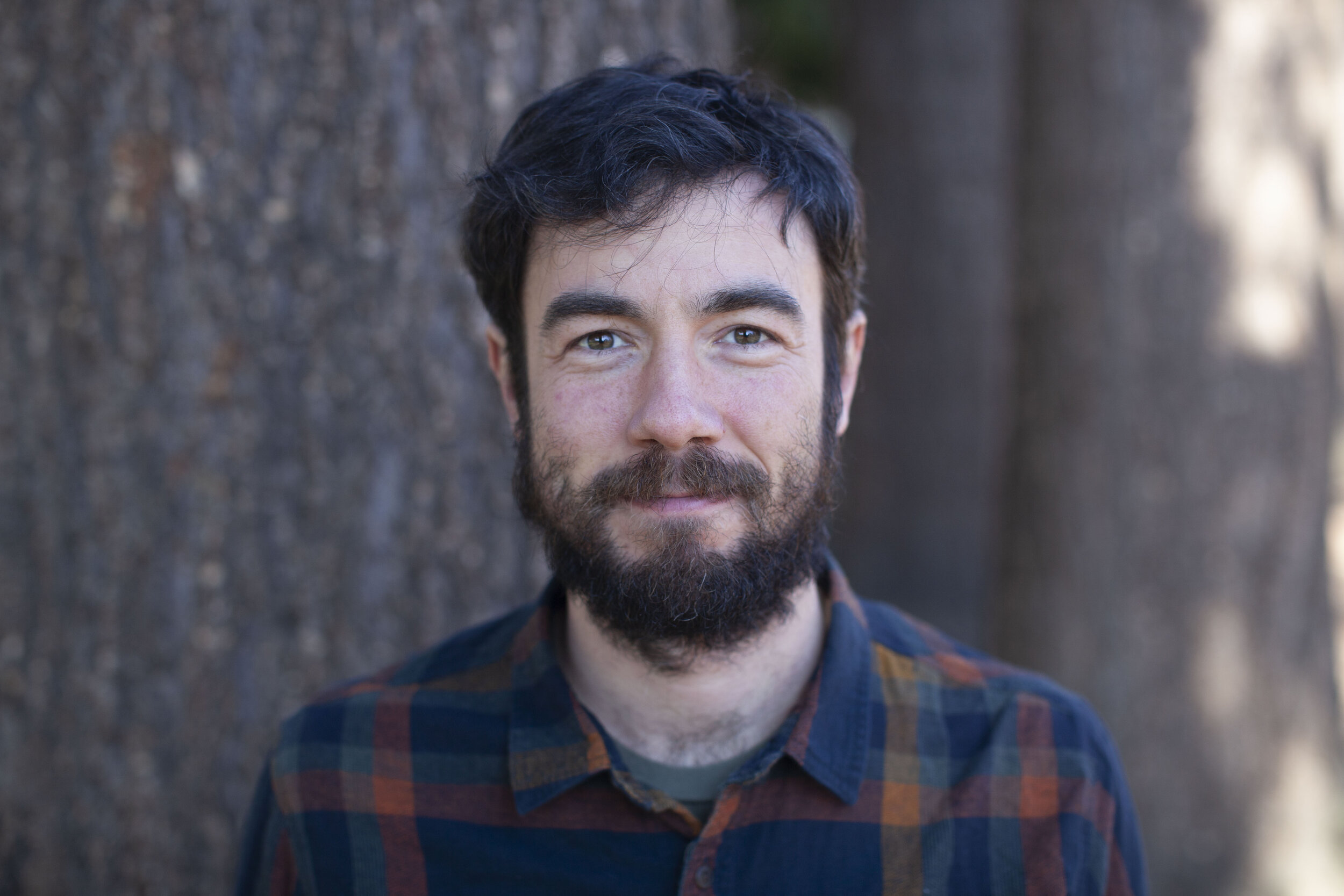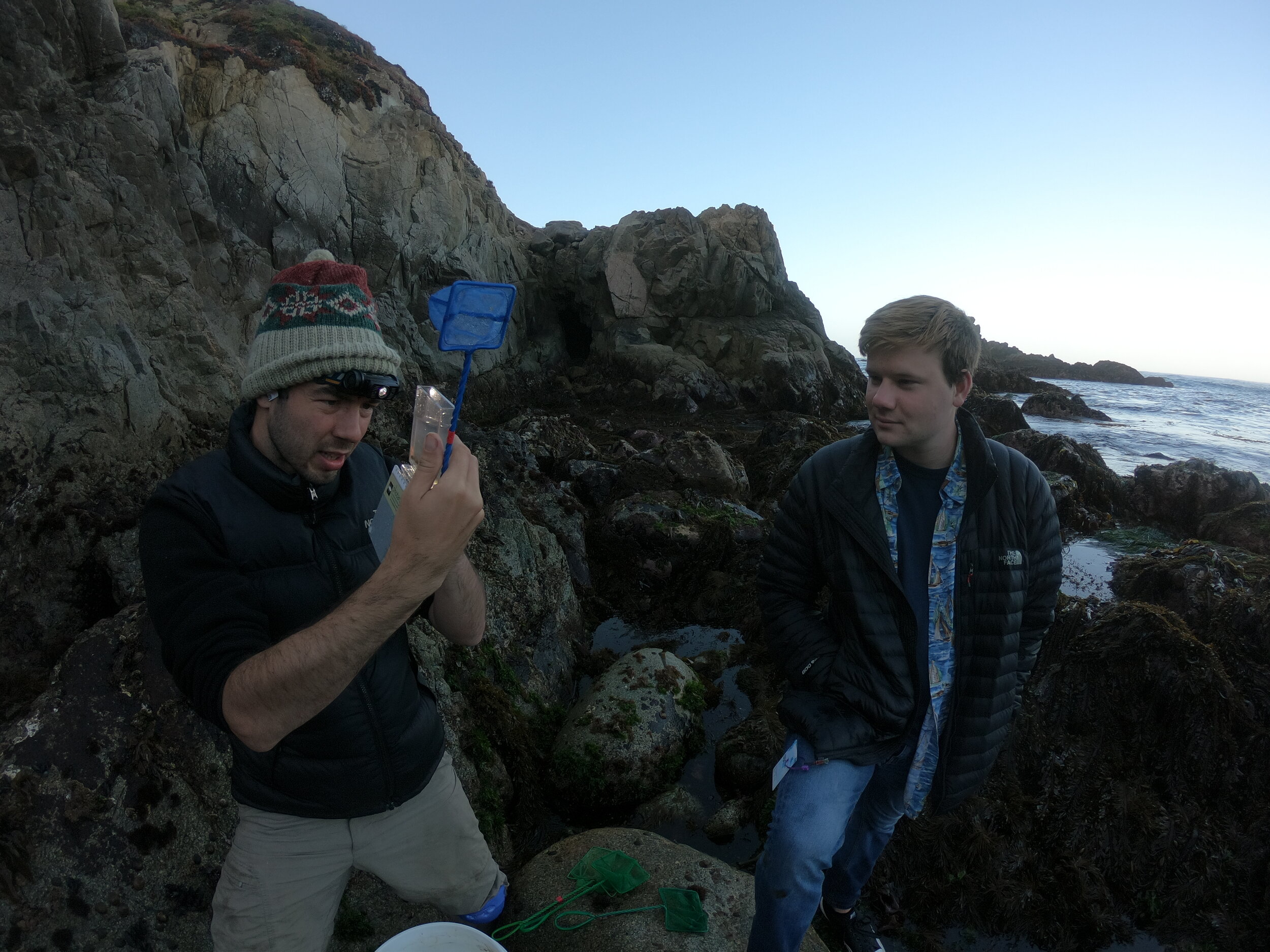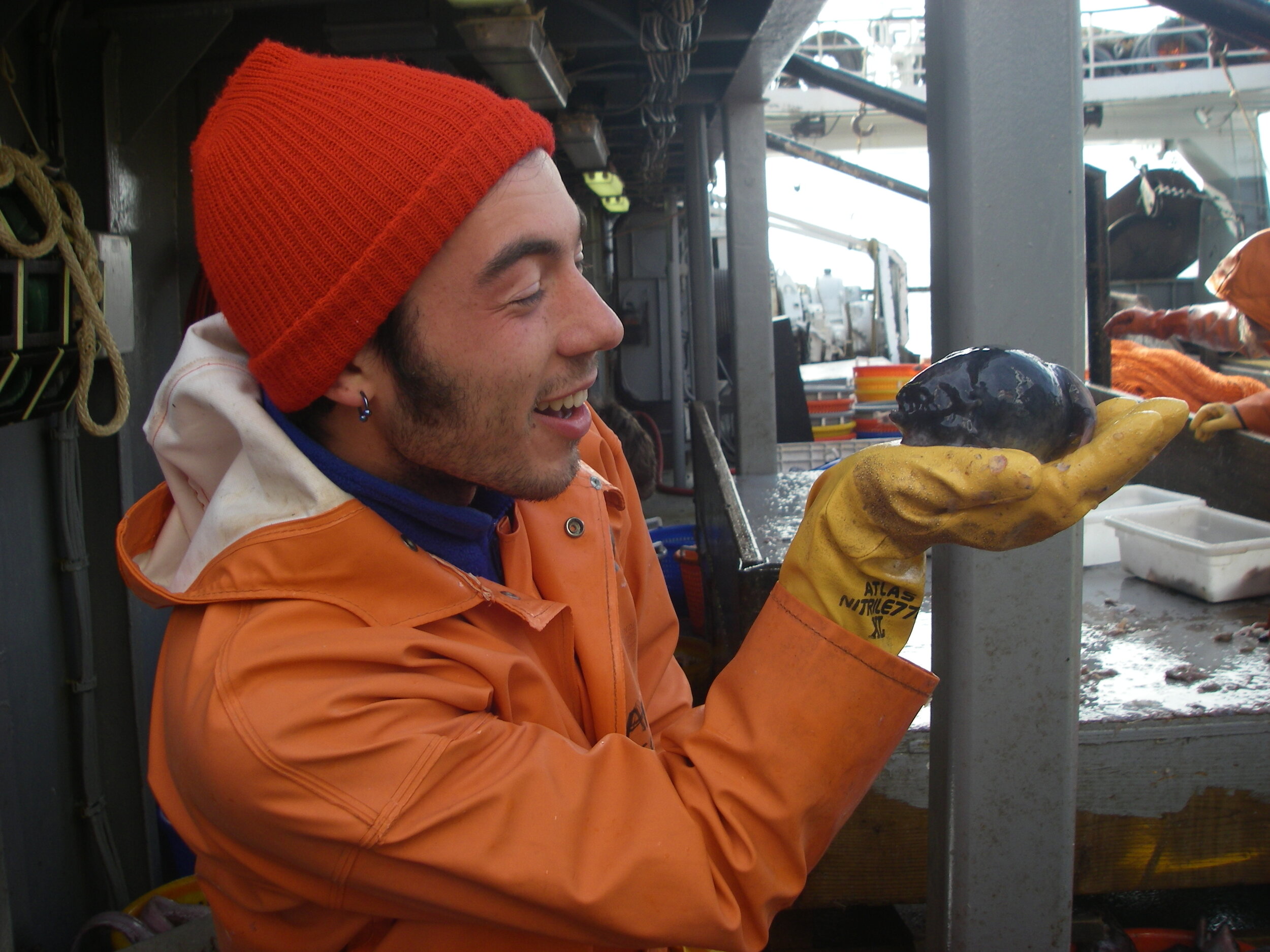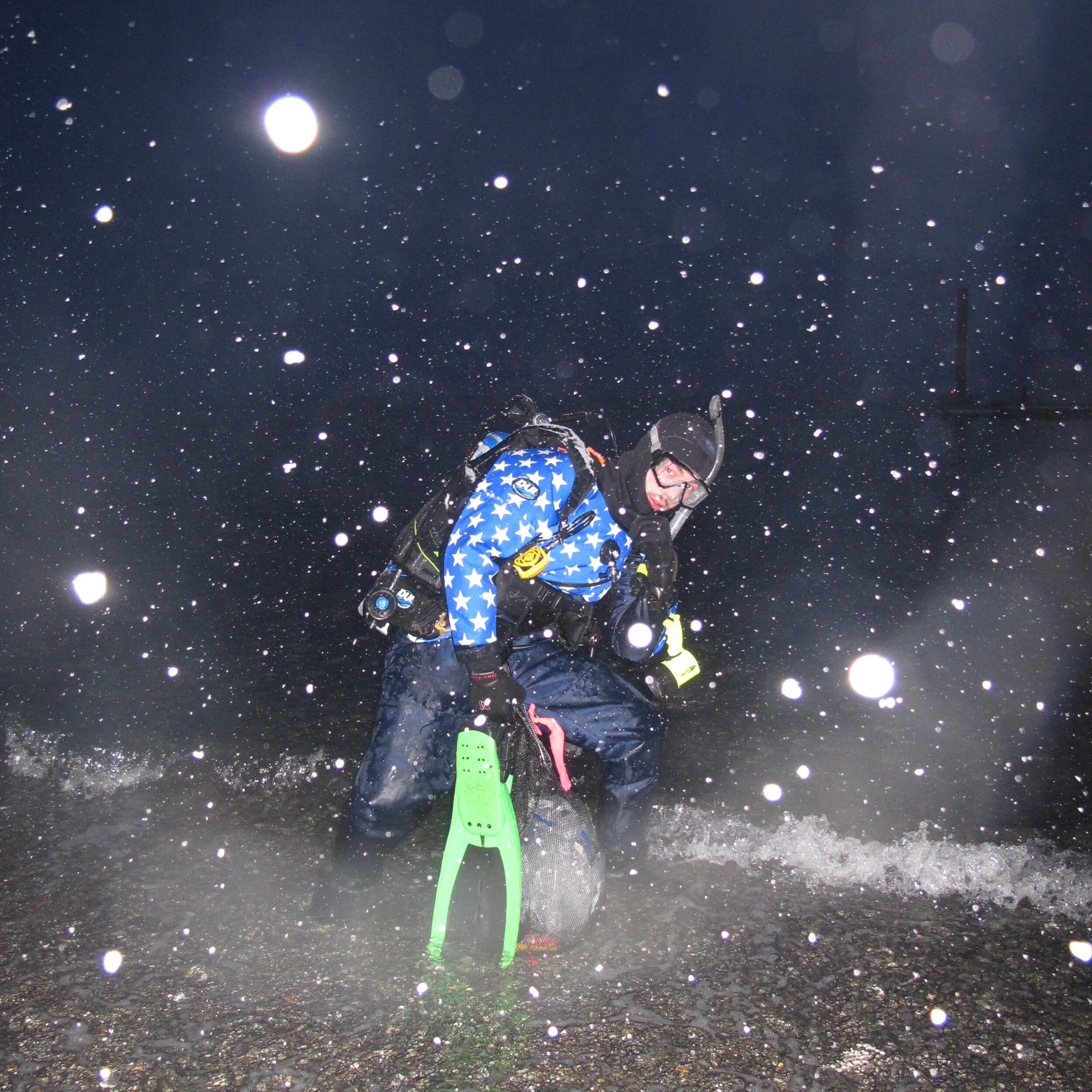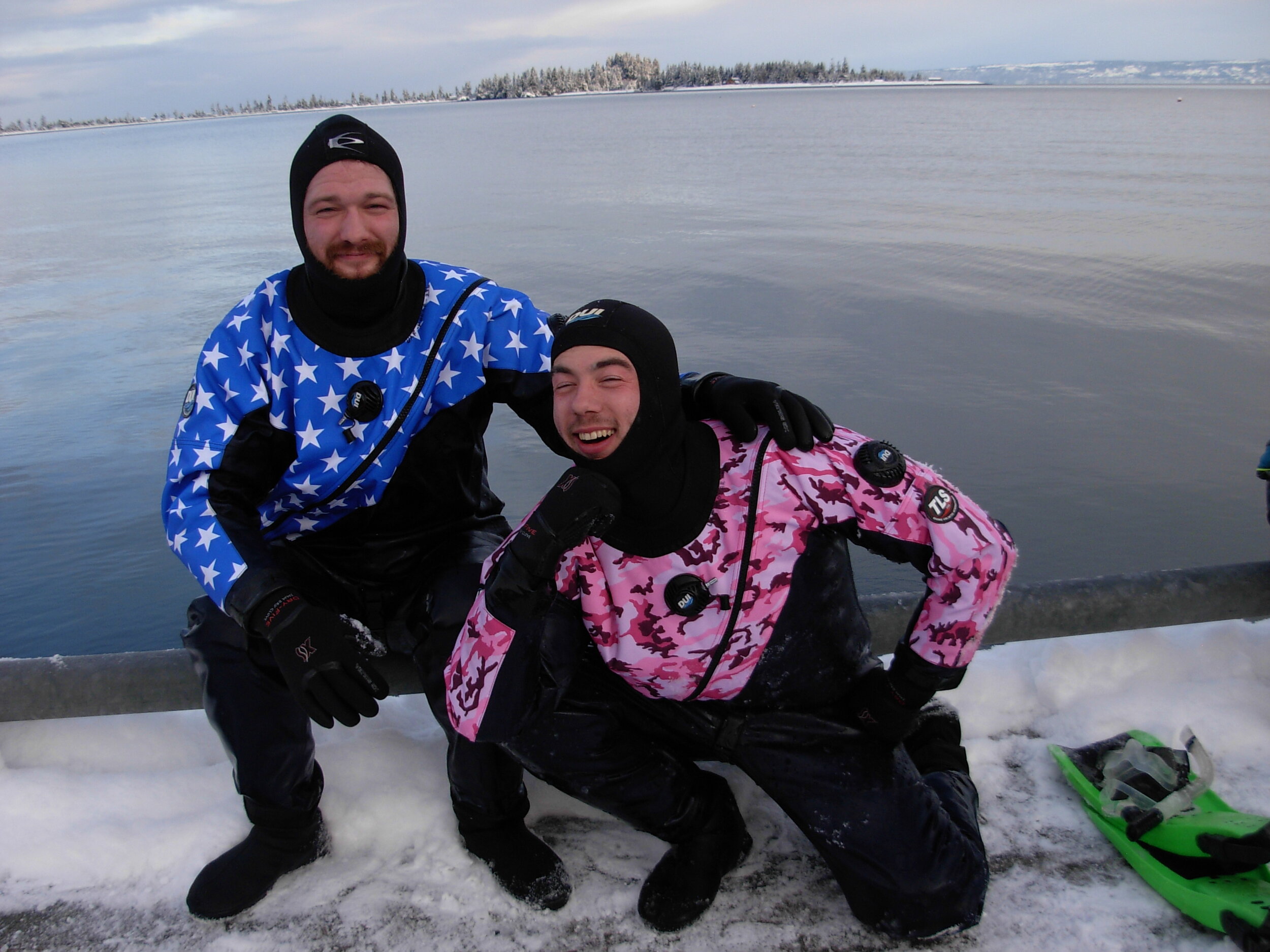Dr. Thaddaeus Buser: Sculpin Scientist and evolutionary biologist
Tell us about yourself!
I grew up in Washington State and spent much of my childhood exploring its many rivers, lakes, and beaches with my family. I enjoy hiking, fishing, archery, and gardening. I have a pet chicken named Greta, and she is the sweetest, softest, and most interesting non-human animal I’ve ever known. I learned to SCUBA dive in Puget Sound but have done the vast majority of my diving in Alaska. I used SCUBA to observe and collect fishes for my research in Alaska, and so became scientific dive certified. Diving in general, and the scientific dive certification process in particular, is pretty uncomfortable in winter and spring in Alaska, which is when the water is clearest and I did almost all of my diving. Donning one’s gear when the air temperature is 20 degrees Fahrenheit and the water is 37 degrees is tricky and takes some getting used to. For example, you cannot check your regulator without letting it soak in seawater first or else the moisture from your breath will freeze it open!
Can you share more about your research on sculpins?
I study the ways in which ecology, reproduction, and evolutionary history have shaped the skeleton of sculpin fishes and their close relatives. For example, some sculpins, like the cabezon (Scorpaenichthys marmoratus), eat large crabs and abalones, which they pry off of rocks with their mouths, so require high bite force and robust jaw bones to facilitate this predation style. Meanwhile others, like smoothhead sculpins (Artedius lateralis), eat fishes (usually other sculpins!) and shrimps and so require fast jaws to capture their prey before it escapes. These two species have very different jaw morphologies from one another, reflecting their differing feeding modes. To study these kinds of relationships between anatomical form and function, I use micro-CT scanning techniques to create high-resolution, digital models of the skeleton of individual sculpins. I can then digitally map points on the bones and thus represent their shape using a number grid, which in turn allows me to use powerful statistical methods to test my hypotheses about how the shape of each bone has evolved.
An image of the skull of a Leister sculpin (Enophrys lucasi), taken from a micro-computed tomography (micro-CT) reconstruction.
How did you become interested in studying the ocean, and more specifically, sculpins?
I’ve always been drawn to aquatic life, particularly the weirdos like sculpins, crayfish, and anything else I can find hiding under rocks. I didn’t really think that science was for me when I was growing up, but eventually realized that I would be spending my whole life thinking about fishes and aquatic life regardless of what I did for a living, so I decided to give it my all and do whatever I had to do to give science a shot. After that, I knew that I wanted to study fishes, but didn’t know much more than that, so I volunteered and worked for any professor who would respond to my emails. I used those experiences to home in on the kind of research questions that really excited me, and ended up working on a genetics project on intertidal sculpins. The more I learned about sculpins, the more I wanted to know, and that’s pretty much been my life ever since, going on fifteen years now. I’ve published papers on many different fishes, but sculpins will always be the apple of my eye.
A fluffy sculpin (Oligocottus snyderi) collected and photographed in central California.
What do you wish everyone knew about the ocean?
The intertidal is one of the most hostile marine environments. When people think of hostile ocean habitats, they often picture the deep sea, which is cold, dark, mostly barren, and under intense water pressure. But the deep sea is a relatively stable environment and the organisms that live there are actually quite delicate and can live in only a very narrow range of environmental conditions. Conversely, people often think of tidepools as an idyllic environment, but they are subject to extreme variation in temperature, salinity, dissolved oxygen, currents, nitrogenous waste, solar radiation, etc. on a daily basis. Most fishes cannot tolerate wide swings in environmental variables, so it’s no coincidence that, compared to other ocean habitats, relatively few groups of fishes are able to live in intertidal habitats. Most intertidal fishes have a suite of adaptations that allow them to cope with the constantly changing environment, such as the ability to breath atmospheric oxygen, live on land for extended periods of time, and greater ranges of molecules like heat-shock proteins and enzymes. Ironically, the intertidal is in fact a refuge for the species that are able to survive there precisely because it is so hostile to “normal” aquatic marine life.
With your work, what do you hope to accomplish/discover/learn? OR with your work, how does it apply to our lives?
The central theme of my work is exploring the diversity of life and what factors promote or hinder diversification. There are hundreds of species of sculpins and they variously live in all manner of habitats- from cold, turbulent freshwater streams to kelp forests, the deep sea, and there are even troglomorphic species that live in caves. Some species can be difficult to differentiate to the untrained eye, but they are by no means interchangeable and are often adapted to specialized niches within a stream, tidepool, or rocky reef. Understanding how the unique abilities of a species has come to be and how each fits into the habitat in which it lives allows us to more fully understand not only the number of species in a given habitat, but the functional diversity as well. Sculpins are important in their own right, but are also critical vectors of energy from the benthos- meaning that they feed mostly on small invertebrates that live under rocks or other difficult to access habitats, and are in turn fed upon by large sportfishes such as trout in freshwater and lingcod in the ocean, as well as marine mammals, birds, and even terrestrial predators like racoons and snakes.
What is some of the best advice you have received from mentors? What advice do you have for young scientists, artists, and explorers?
The best advice that I received as a young researcher was basically to try as many different kinds of research as my schedule would afford. I worked throughout my time as an undergraduate, so I wasn’t able to pursue every possible lead, but I still was able to experience enough kinds of research to inform my next step, which for me was a master’s degree and a Ph.D. after that. The kind of research that ended up really clicking with me (systematic biology) was absolutely the last thing that I could have guessed when I first started and it was only through experience that I learned how much I enjoy it. There are many things out there that, to borrow the phrase, you never knew you never knew, so get as many experiences as you can under your belt and never be afraid to try something unfamiliar.
Thaddaeus sampling tidepools on Attu Island, the farthest-east island in the Aleutian Archipelago. Taken by Veronica Padula.
Please share a favorite memory from your research/field work!
I spent a month collecting intertidal sculpins in the Aleutian Islands as part of my masters research. I was looking for two species of sculpins that hadn’t been collected in decades and so no specimens were available that were suitable for analysis of their DNA. After over a week of solo-backpacking across Adak Island in the incessant wind, rain, and cold, I finally found the two species and collected several individuals of each. I was able to use these specimens in my work and found that they are actually more closely related to sculpins that occur in Japan and Russia than they are to those that occur in North American. This finding countered all previous hypotheses about where these Aleutian sculpins belong in the sculpin family tree, and suggested that convergent evolution was likely to blame for the historical mismatch.
For more awesome fish photos follow Thaddaeus on twitter @Cottus_rex .
Thank you for sharing with us! Keep inspiring others and being a leader.
We always love to be introduced to new ocean explorers. If there’s someone you’d like to see an interview from, send us your ideas!
